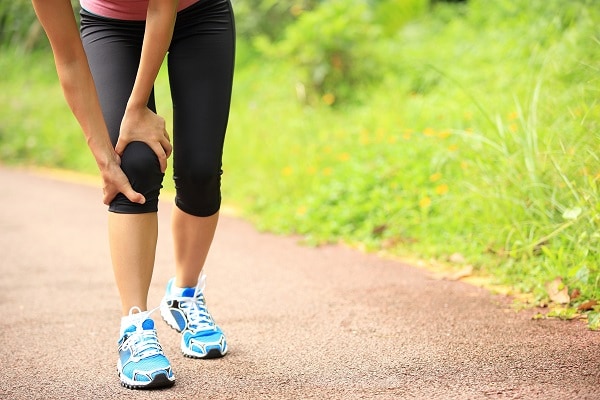ITB syndrome – pain on the outer side of the knee
Are you looking forward to training, running, but are you forced to interrupt or end it because again, after the same distance or time of running, your knee has sounded? It hurts externally under the patella, at about thirty degrees of bending and more. When running downhill, it gets worse. The paradox is that you do not have to have difficulties in other sports. It is likely to be a very common iliotibial tract syndrome (ITB syndrome).
Why a knee?
If you suffer a running injury, it will most likely be a knee joint. Difficulties in this area are confirmed by over 30% of injured runners. Interestingly, however, the root cause of the problem usually does not lie in the knee itself. Often there are problems from other parts of our body. For example, if we don’t use our foot and ankle to cushion bumps when stepping on, we’ll have a higher risk of knee pain after a long run. If we have back pain or poor posture, there may be an inadequate load on the knee and then subsequent difficulties. Therefore, although it seems paradoxical, we do not always have to work directly with this joint when treating the knee joint, but on the contrary, with other parts of our body, and the effect of the therapy will still come.
What is ITB syndrome?
The syndrome of the iliotibial tract is caused by excessive rubbing of this ligamentous strip against the bony protrusion on the tibia. Over time, sterile inflammation can occur here, which is a source of pain. Why does this phenomenon occur? The causative agent is usually increased tension of the iliotibial tract or muscle (thigh ligament tensioner), which is clamped into it.
This increased muscle tension occurs when our musculoskeletal system is out of balance. For example, the different length of the limbs may be to blame. Usually these are runners who have problems in the hip joint area and with pelvic stabilization. Poor pelvic stabilization can manifest itself externally in an abnormal running style. In a runner, for example, there may be a significant decrease in the pelvis in the vertical plane or an increased internal rotation in the hip joint. All these deviations can then increase the chance of overuse injury.
How do I deal with this?
The fact that I have increased tension of these tissues does not necessarily mean that I have already developed inflammation. In the thigh ligament tensioner, for example, there may be only a trigger point, which causes pain and higher tension of the fascia. The tension of the entire area of the outer thigh (from the hip joint to the knee) can be reduced, for example, by massage, stretching or kinesiotap.If the trouble keeps returning, it would be appropriate to diagnose why this phenomenon occurs and, based on this, to establish compensatory exercises. There are many ways to exercise, among the very effective is the method of dynamic neuromuscular stabilization (DNS), based on developmental kinesiology. This method will solve the cause of your difficulties, which is its advantage over other methods, such as classical analytical strengthening.
Postponing treatment does not pay off!
If you are one of the runners who are struggling with this phenomenon, you are in danger of developing inflammation. If, during the usual training doses, you feel the above-mentioned discomfort, which always somehow subsides on its own (or after a day off or massage), it means that it is your weak point. If there is any extreme load, there is a risk that you will not be able to compensate for your handicap and you will develop ITB syndrome.
An example would be a runner who has the symptoms described above during a standard workout. He decides to run a mountain run or ultramarathon. After the race, the attachment of the iliotibial tract is painful to the touch, has a higher temperature, pain is even when walking. In this case, it is probably an inflammatory reaction. It is advisable to indulge in peace, use tayping, manually release adjacent tissues, not be afraid to use nsaid anti-inflammatory drugs (brufen, ibalgin) for several days. The place can also be iced. After a few days, it is good to start compensatory exercise or perform physical activity that we know will not cause our pain. Start running only when the pain subsides, e.g. when walking.
If you do not treat this phenomenon and try to run with pain, then give yourself time off and run with pain again to no avail, there is a risk that the inflammation will go into a chronic stage.
If your problem persists for several months and you feel that exercise or a change in e.g. running technique does not help, it is advisable to see a doctor and consider, for example, the application of corticosteroids. Still, it’s important to exercise, corticosteroids will help remove inflammation, but not the cause that triggered it.

